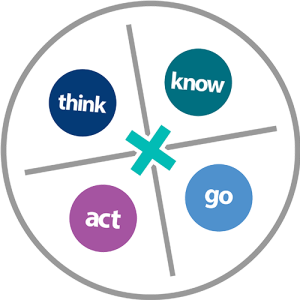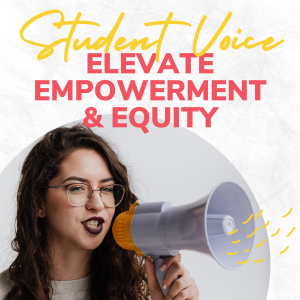Stop and think about the biggest world changes in the last few centuries, good, bad, or otherwise. Sputnik. Civil disobedience (from Gandhi to Martin Luther King), the Industrial Revolution (from the cotton gin to Henry Ford), humans flying! The common element for change is the intoxicating energy from a few who are so committed to an idea that you just cannot look away, you have to figure out what they’re doing, what’s making it work in their small worlds, how you can be a part of it, spread the word.
This was my reaction to last week’s College and Career Readiness Special Topic meeting on curriculum alignment hosted by Oregon’s Chief Education Office. After spending the last twelve years engaged with educators around the country (from Sauk Valley, IL, to Merced, CA, to Orlando, FL, to Brooklyn, NY), I was intoxicated to find such engagement on curriculum alignment here in EPIC’s backyard!
Indeed, my intoxication came from the awe and honor to be among so many educators passionate about aligning their curriculum and instruction in ways that truly promote student success. We as a society are remiss if we do not acknowledge and give support to educators working to teach in a cohesive fashion that supports a student’s movement from one course to the next, from one institution to the next, up their individual pathways to employment.
In order to share the great student success efforts of Oregonians highlighted last week, below I’ve organized panelists’ presentations into principles of effective curriculum alignment from EPIC’s decade of research and implementation experience.
But first, hats off to all those educators across Oregon collaborating on curriculum and instruction, particularly those of you working across institutional divides. In the words of Margaret Mead:
[dt_quote type=”blockquote” font_size=”big” animation=”none” background=”plain”]
“Never doubt that a small group of thoughtful, committed citizens can change the world.
Indeed, it is the only thing that ever has.”
[/dt_quote]
- Curriculum alignment focuses on curriculum and instruction, and it must have funding.
- Instructors know what students need to be learning, and they want the time to collaboratively figure out how to better teach, how to better implement better teaching practices, how to align their curriculum content to best practices in instruction.
- Oregon has examples where community college faculty and high school teachers are collaboratively scoring dual enrollment student work with strong inter-rater reliability. This demonstrates that the instructors know what students need to learn and what it means to be proficient in those skills. Instructors need time to loop that information back to collaboration around instruction to better affect student success.
- Bottom line—it is the instructors who directly influence student outcomes and it is there that we must focus when looking at student success initiatives!
- Professional development and instructor engagement is key.
- Curriculum alignment must rest with the instructors, and instructors must be empowered to carry out the alignment process and seek coherence all along the student pathway.
- Teachers need structured time together, within disciplines, across disciplines, and most importantly, across institutional boundaries.
- We need to break down the old adage of college instructors telling students to “forget everything you learned in high school” that forces students to make connections necessary for learning versus truly supporting student learning by building on what they have already learned.
- Curriculum alignment significantly boosts both student and faculty engagement and therefore significantly boosts student transitions, from one course to the next, both within schools and across institutional boundaries.
- It does this by ensuring that faculty see their curriculum within the progression of intended learning and students see the relevance of individual courses toward the achievement of educational and employment goals. Students are more engaged when faculty members are engaged, and faculty engagement is increased when students are engaged.
- Everyone benefits from vertical partnerships.
- Curriculum alignment must be a routine, annual practice if the curriculum is to maintain coherence and if students are to avoid being derailed by misaligned curricula. This is a challenge for many curriculum alignment programs but is important for two primary reasons:
- The global perspective of an ever-changing landscape—faculty, disciplines, students, and employers.
- The technical perspective of the practice (which gets to sustainability) that faculty are continuously engaged with their curriculum but they may not know changes to the curriculum of those courses preceding and following their courses. This practice gets the curriculum “out of the closet” and into a system that promotes ongoing revision and collaboration.
- Curriculum alignment is not a panacea. It must be carried out in concert with other recommended academic and student services practices that combine to bring about the greatest levels of student success.

Kirsten Aspengren is Inflexion’s Director of Curriculum Alignment. She has been with Inflexion since 2005 and led the development and execution of the AP Course Audit. For more information on Inflexion’s recommendations, contact Kirsten at xvefgra.nfcratera@vasyrkvba.bet
“After This Comes That” poster courtesy of thethreesisters.




